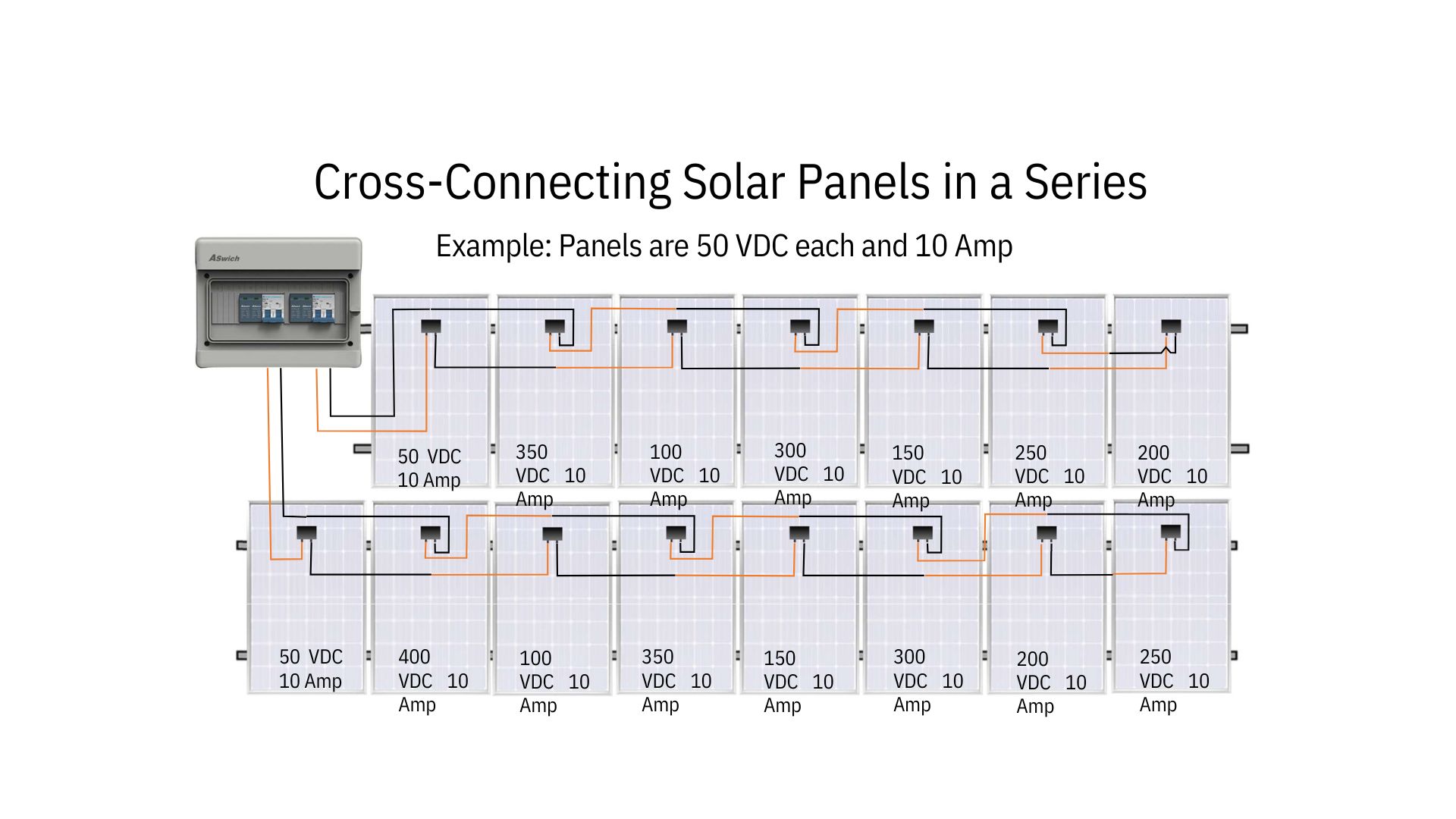Revolutionizing Solar Connectivity: The Cross-Connection Advantage”
In the ever-evolving world of solar energy, the way we connect solar panels plays a pivotal role in optimizing efficiency, durability, and overall system performance. Traditional panel-to-panel connections have long been associated with challenges ranging from cable management issues to uneven lengths and maintenance concerns. This article explores a groundbreaking approach — the cross-connection method — and sheds light on the myriad advantages it brings to the table.
Optimizing Cable Lengths for Longevity
One of the primary challenges faced with traditional connections is the extended length of negative wiring, exposing it to the elements and potential damage. The cross-connection method tackles this issue head-on, eliminating unnecessary cable lengths and reducing vulnerability to weather-related wear and tear.
Streamlining Installation with Reduced Accessories
Extra cable clips and ties are common necessities in conventional panel configurations, often leading to increased complexity and durability concerns. By embracing cross connections, the need for additional accessories is significantly reduced, simplifying the installation process and enhancing the overall robustness of the system.
Achieving Consistency in Cable Lengths
Uneven cable lengths, particularly between positive (Red) and negative (Black) connections, can disrupt the balance of a solar panel system. Cross connections offer a solution by ensuring consistent cable lengths, promoting uniformity and optimizing the overall performance of the array.
Minimizing Maintenance Challenges
Maintenance is a critical aspect of solar panel ownership, and traditional connections may pose challenges in terms of potential cable damage during routine checks or repairs. The cross-connection method minimizes these challenges, contributing to a more reliable and sustainable solar energy system.
Elevating Cable Management Efficiency
Efficient cable management is often underestimated but is crucial for a well-organized and visually appealing solar panel array. Cross connections facilitate streamlined cable routing, making it easier to manage access cables from panels and contributing to a cleaner and more organized installation.
Universal Compatibility for Varied Panel Designs
Not all solar panels are created equal, and certain designs, such as Longi panels, may not seamlessly integrate with cross connection. The cross-connection approach offers universal compatibility, accommodating various panel designs and ensuring a versatile solution for diverse solar installations.
Maximizing System Efficiency
Beyond addressing specific challenges, the cross-connection method optimizes system efficiency by promoting a more even distribution of electrical currents. This results in enhanced overall performance across the solar panel array, translating into increased energy yield and cost-effectiveness.
Economical Cable Usage for Cost Savings
By eliminating unnecessary cable lengths, the cross-connection method not only enhances system efficiency but also contributes to cost savings through more economical cable usage. This makes solar energy more accessible and financially viable for a broader range of applications.
Simplified Installation Process and Enhanced Aesthetics
The straightforward design of cross connections simplifies the installation process, making it more user-friendly and efficient. Additionally, the cleaner layout enhances the visual appeal of the solar panel system, aligning with the growing emphasis on aesthetics in renewable energy installations.
In conclusion, the cross-connection method emerges as a game-changer in the realm of solar connectivity. By addressing common challenges associated with traditional panel-to-panel connections, it paves the way for a more efficient, durable, and visually pleasing solar energy future. As the world continues to embrace sustainable energy solutions, the cross-connection method stands at the forefront, reshaping the landscape of solar panel installations.

